DEPARTMENT OF ARCHITECTURE, DESIGN & MEDIA TECHNOLOGY
The cover is a graphic point cloud of landscape modeling made with salt dough transforming a
four lane road into a green area. The digital processing unfolds a creative landscape.

The cover is a graphic point cloud of landscape modeling made with salt dough transforming a
four lane road into a green area. The digital processing unfolds a creative landscape.
Create - The Department of Architecture, Design
Media Technology is located in Aalborg and Copenhagen. We are approx 150 employees and Ph.D. students and we are organised in four sections covering a broad range of research areas all concerning technology and ways of developing sustainable and attractive ways of living. We are a part of the Technical Faculty of IT and Design at Aalborg University.
Our department comprises disciplines within architecture, design, media and technology providing the foundation for a powerful new field of research and development of competence within the field of technology and design with a human focus.
We provide teaching programs to about 1200 students and we take pride in educating the future Engineers and Masters of Science supported by state of the art facilities, laboratories, and equipment. Create has two study boards affiliated with the educations of Architecture & Design and Media Technology. They ensure that our students are educated to face the challenges of the future labour market and address the challenges of the future within our common goals of sustainable development.
Create’s vision is of a liveable and
for all. Our contribution to this vision is research in and development of human centred design and technology with people. We investigate the interplay between creativity, users, and technology by conducting research within the fields of architecture, urban design, product development, and media solutions.
Create's mission is to pave the way for new technologies and solutions that contribute to answers for future societal challenges for sustainable and attractive ways of living. We do this in in close collaboration with companies, universities, local authorities, and we participate in both national and international projects. The common focal point is to deliver excellent human design centred technology research.
HANS JØRGEN ANDERSENHead of Department hja@create.aau.dk

The department’s research concentrates on Architecture, Urban Design, Industrial Design and Media technology within areas such as sustainability, robotics, sound and music analysis & processing, light design, game technology, interaction design etc. We conduct our research in close collaboration with a wide range of companies, universities and local authorities, and our researchers participate in both national and international projects. The common focus points of our research are to investigate the interplay between creativity and technology, and to use this interplay to fulfill our ambition of delivering excellent human design centered technology research.
To meet this vision the department is organised in four sections Architecture and Urban Design, Industrial Design and Media Technology, which is situated in Aalborg as well as in Copenhagen. The four sections are further split into thirteen research groups – each consisting of researcher who across sectors and fields of studies cover common ground in terms of their research. All research group’s affiliate to a section but the members do not necessarily come from the same - the important thing with a membership is the common research interest. The sections and research groups are presented in the following diagram.


The Architecture and Urban Design section keeps all aspects of the built environment in mind – from the construction of a building’s details to the megastructures within the urban landscape. We are concerned with how we can influence the built environment and its development, and how we can create and use new knowledge across different disciplines within architecture, engineering, and urban design.
Our research and teaching deals in a broad sense with designing the city's spaces and buildings, and we want discuss and develop the built environment. We are a academic environment that wants to contribute with knowledge that can develop, influence, and critically discuss the sustainable society of the future, and the role that architecture and the built environment play in this.
The section creates the framework for two unique education and research environments: 'Urban Design' and 'Architectural Engineering'. These two areas are at the forefront in their respective fields and deliver a high professional level through integrated and interdisciplinary design research. Here, we combine design and technology with social science com-

petences. Researchers and students often collaborate with various actors in society to develop new solutions and methods within the built environment.
Users, technology, sustainability, and method
• Users: We focus on how architecture affects our body (and vice versa) and on creating a collaborative practice for architecture and urban design that rests on user involvement and co-creation.
• Technology: We test and develop, among other things, new building components and new computer-based methods for designing architecture. We also use various tracking technologies to understand urban behavior.
• Sustainability: The section's perspective on sustainability covers both social and environmental sustainability. Among other things, we focus on locally based architecture, zero energy buildings and constructions, social inclusion, and climate change.
• Method: Our methodological approach rests on the use of several different methods and on the research methods that are part of the architectural and urban design subjects, e.g. drawing and visualization. This enables us to gain knowledge about the built environment through, for example, scenario building and experiments.
LEA HOLST LAURSEN Head of Sectionllhl@create.aau.dk
RESEARCH GROUPS
The research group is the only urban design research group in Denmark and we customize interdisciplinary and critical-creative research methods to the specificities of people and places, to inquiry into critical agendas for cities and territories. The group seeks to create knowledge that can influence the creation of sustainable urban futures. The research undertaken critically investigates how these futures, are and for whom. Our dynamic research in the field of urban design is grounded by two key components. Firstly, how can we reimagine our built, lived and experienced environment to create new futures, and secondly, to situate our findings and results through action, in the form of practical design solutions, policies, curatorial experiments and strategies.
The research covers the rapid change of our cities in the post millennium period, focusing on the investigation of different methods and approaches in order to create tools that can support a more sustainable and long-term proof urban development. Our research pays particular attention to the entanglement of the physical and built environment with social, cultural and political aspects of urban life. How commuting, everyday life transport, digital media, new production and consumption patterns have effects beyond mere displacement of people, information and goods. Thus, the networked patterns of contemporary urbanity are sites of social, spatial, cultural, and technological transformation, which is explored in the interdisciplinary research agenda of transforming and mobile cities.
WEB:
www.create.aau.dk/research/urban-design-transformation
Transformation and Mobilities has its own lab. The lab is about taking data and display them graphically via maps, tables, dashboards, heat maps, timelines and word clouds etc. In our lab we have a wide range of visualization software as well as a large touch screen where complex data is transformed into the simple to gain new perspectives and insights. The C-MUS lab is home to the newly developed decision-support tool AirMind. Using data visualization, AirMind combines a variety of quantitative, qualitative and visual data from various disciplines to improve the decision-making power of the aviation sector.
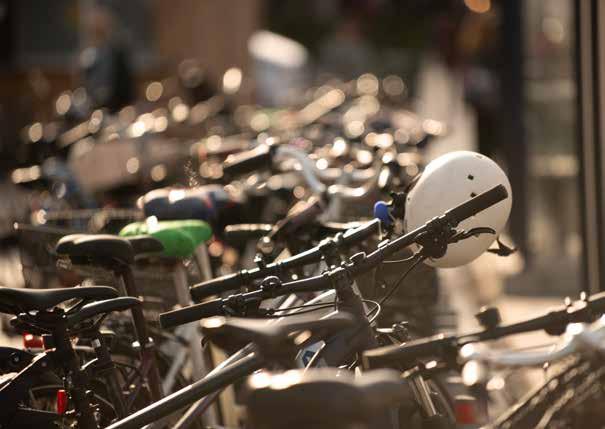
Create Integrated Architecture regards integrated design as a cornerstone in research, education and practice. The group is critical towards the division of technical and aesthetical mindsets in the building practice and researches to support the integration of all relevant aspects of building also in early design phases. The group works inter-disciplinary often with mixed methods addressing health and well-being, sustainability and tectonics in architecture.
The group applies a human-centered approach to architecture with the aim of enhancing health and quality of life in built environments, researching how people perceive and interact with architectural environments. It researches climate mitigation and adaptation,
architecture as a passive means of comfortable indoor environments, sustainable human activity, fossil free building operation and circular materiality. The group researches tectonics in architecture through experiments and developments related to specific materials, craft-based, industrial- and digital technologies to develop the tactile, acoustic and visual qualities of architecture.
WEB: www.iarch.create.aau.dk


BBAR consists of researchers working with inspiration from architecture, neuroscience, urban design, urban mobilities, and sociology in order to explore the basic question: How does the mobile human being experience and sense the contemporary city?
The research group explores how cities and architecture can integrate the built environment with the mobile human being in a socially and mentally sustainable manner. We aim to advance our understanding of how movement within the built environment affects human experience, sensation, health and everyday wellbeing. We believe that relating to the built environment is fundamental to human beings and therefore expressed in both the body, brain, and behaviour. By exploring neuroscientific theory and interdisciplinary methods, we want to highlight how psychobiological and sociocultural approach-
es to urban mobilities can advance the design sciences. Our approach to the interaction between mobile human beings and cities aims to develop new knowledge for the design of future cities and architecture.
WEB: https://vbn.aau.dk/en/organisations/brain-body-architecture-research
DESIGNING THE IRRESISTIBLE CIRCULAR SOCIETY
The way we live in and build cities must change. The challenges from climate change, loss of biodiversity, resource depletion and overshooting of Earth’s carrying capacity are overwhelming. The DESIRE project will develop methods for transforming existing urban spaces and designing new neighbourhoods and urban spaces in innovative ways where art, design, and architecture play key roles. Together with partners from six European countries the project will set new standards and develop methods for
large-scale urban development, renovation and construction. The project works within three themes: 1) Creating social and inclusive housing, 2) Transforming through symbiotic relationships and 3) Reconciling cities with nature.
PROJECT PERIOD:
October 2022 - September 2024
PROJECT PARTICIPANTS:
DI, BLOXHUB, Dansk Design Center, DAC, AAU, DTU, POLIMI, KA, NXT, Knowledge Hub Zealand, Domea, CER, Kairos, Citta Di Torino, The Beach, BTC, Samenleven, Riga City Council, PlusValue, Danske
Arkitektvirksomheder, 3XN/GXN, Chart, Dark Matter Lab, The really regenerative centre.
FUNDING:
The European Commission (granting authority CINEA). Programme: Horizon Europe
Total budget: €4.754.000 - 100% from EU, AAU share: 347.000€
Designing the Irresistible Circular Society
DESIRE will create a movement that sets new standards and develops methods for transforming urban spaces

CONTACT PERSONS:
Postdoc Olivia Thomassen Harre e-mail: otha@create.aau.dk
Head of Department: Hans Jørgen Andersen e-mail: hja@create.aau.dk
Associate Professor Lea Holst Laursen e-mail: llhl@create.aau.dk
WEB: https://www.irresistiblecircularsociety.eu/
EXCLUSIONARY DESIGN
– SOCIAL EXCLUSION IN PUBLIC SPACES
The research project explores how homeless and socially vulnerable people are being excluded from public spaces in the city via design of leaning benches, spikes, and other design interventions preventing them from occupying and staying in public spaces. The project also investigates how the exclusion by design connects to new legislation that criminalizes particular behavioral patterns in the city. The project will use ethnographic approaches and design interventions, and the final goal is the creation of a ‘dialogue platform’ making the problem of exclusion by design visible to citizens, politicians, and urban stakeholders.
PROJECT PERIOD:
January 2021 - December 2024
PROJECT PARTICIPANTS:
Aalborg University, Create / Copenhagen Municipality / Projekt Udenfor / Kompasset / SAND / Foreningen MINORITET
FUNDING:
5.3 Mill DKR, the Velux Foundation, HUMAN Praxis
CONTACT PERSON:
Professor Ole B. Jensen obje@create.aau.dk

The section of Industrial Design researches and teaches design methods, design processes, and design thinking in order to study how design can be a driving force for a sustainable transition. 80% of a product's resource consumption is determined in the design phase. Therefore, design is crucial in the green transition. Our current research focus is on long-lasting products that remain attractive and usable for a long time.
We research and teach design
Design is shaping, method, process, and reflection at the same time. This is what we know as design expertise:
• to be able to see a problem from new angles
• exploratively examine potential solutions through sketches, models, etc., which give shape to a synthesis.
In both research and education, we start with real problems, challenges and opportunities within product and service development. From the initial search phase until there is an overall conceptual design proposal.

We collaborate with companies and external organizations in both research and teaching. This helps to ensure that our research projects and teaching in design are:
• relevant
• connected with reality
• creates new valid knowledge.
Design - and developing design - must make sense for users and customers. They perceive and form an opinion about the products and the solutions that are designed, developed and produced. Therefore, customers and users are a natural part of the companies' business strategy and brand. We take this into account in our holistic approach to design, where we use a user- and context-oriented approach in both our research and teaching.
CHRISTIAN TOLLESTRUPHead of Section
cht@create.aau.dk
In the ‘Design Lab’ research group we use design thinking as driver for sustainable transition. We approach the present challenges of the unsustainable production and consumption patterns with new ground-breaking ideas and approaches.
Transition towards a more sustainable use of products and circular economy begins in the design process. It is not enough to upcycle or recycle products once they have been discarded.
In the ‘Design Lab ’ group, we do research on how to create products that will solve long-term problems and that people will use, cherish and love. We do research on how to create products, that are not prematurely discarded, because they have become obsolete either functionally, aesthetically or technically. And we test concepts, methods and new systemic approaches to sustainable design, development, materials and production, that can extend products’ value and lower their environmental impact.

FROM WASTE MATERIAL TO REAL VALUE
In Denmark, the industry produces 1.1 million tons of waste. Some waste can be downcycled and reused, however, many cut-offs and waste include combined materials and are thereby challenging to recycle or reuse. This is not compatible with the 12th UN global goal of ensuring sustainable consumption and production patterns.
The aim of the project is to enhance Danish design and industrial companies’ competence in ‘Reshaping Waste’ - to redesign and reuse heterogeneous cut-offs and waste materials in a manner that is scalable. In collaboration with industrial and design firms, the project will contribute with exemplars, future designs of reshaping waste.
PROJECT PERIOD:
March 2023 - February 2025
PARTICIPANTS:
Industriens fond, Teknologisk Institut, Dansk Industri, 20-30 Danish industrial and/or design firms
FUNDING:
Industriens Fond 3.7 mio dkk
CONTACT PERSON:
Associate Professor Linda Nhu Laursen e-mail linda@create.aau.dk

We
need to think creatively to achieve the sustainable transition. 25% of all CO2 emission comes from the production of consumer products and 80% of this is determined in the design. Let's reshape the future."

The Media Technology section in Copenhagen, with its five research groups, spans the many facets of interactions between humans and digitality – ranging from direct interactions between humans and technology, to implicit reactive interactions, and to broader perspectives of how technology influence and enhance society.
The section’s staff has diverse backgrounds both in terms of expertise as well as cultural, which allows us to explore highly interdisciplinary areas in detail. This is also the reasoning behind our local approach to teaching and researching within STEM, because we welcome Arts, Music and Design whenever applicable.
We design, develop, and study interactive prototypes which have real-world purposes, including both software and hardware to investigate how we can improve our direct interactions with technology. We study how virtual realities help in the context of rehabilitation or how specialized computer games can help train people for real-world problems. Here, we follow a rigorous design-oriented process where we identify the need, design for
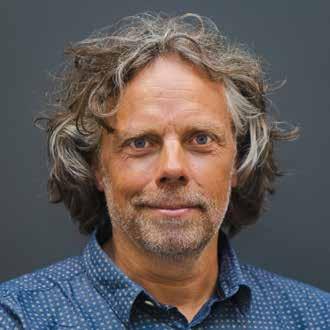
that need, build the soft- or hardware, evaluate it with end-users and iterate until the best solution is found.
We look at indirect interactions and adaptive experiences where humans are not directly aware of the interaction, even though brain and muscle activity can be detected. This area of research feeds into the direct interaction as well, thus closing the loop of interactions between humans and technologies.
We examine how technology affects society. We are involved in designing sustainable services for the broader population and managing those services. We are interested in how service design can facilitate exploration, co-creation and empowerment to address broad societal issues and sustainability.
Furthermore, we are involved in designing lighting solutions that meet the needs of end-users through contextual analysis, concept design, prototyping, and evaluation. Here, we bridge knowledge from architecture, engineering, 3D computer graphics and computing technology.
HENRIK SCHØNAU FOG Deputy Head of Departmenthsf@create.aau.dk
RESEARCH GROUPS
The Media Cognition and Interactive Systems research group focuses on the development of theoretical and empirical frameworks for the integration of cognition, performance, and technology in order to enhance and understand human experience in interactive and immersive systems. Through international transdisciplinary work in basic and applied research, we bridge qualitative and quantitative methods, improve methodologies, and prospect innovative applications in many different socio-cultural and commercial domains. The group has two laboratory facilities in Copenhagen the Augmented Cognition Laboratory and the Augmented Performance Laboratory.


The research group work on virtual reality, augmented reality, and multisensory experiences, exploring the combination of different input and output modalities in interactive applications. We are interested in both development of novel hardware and software technologies as well as evaluation of users’ experiences. We apply our technologies to health, rehabilitation, training, learning and entertainment. We are particularly interested in researching topics related to sonic interaction design for multimodal environments, simulating walking experiences, sound rendering and spatialization, haptic interfaces, cinematic VR and evaluation of user experience in multimodal environments.
WEB: www.melcph.create.aau.dk
The Service Design Laboratory is dedicated to studying and applying service design, as an exploratory co-creative and empowering approach to address broad issues of societal concern. The laboratories key areas of research are service design management and strategy, civic service design and data driven service design. The three different areas are explored from a methodological perspective, defining methods and tools that can be used in the process of value co-creation and from an infrastructuring perspective, considering the socio-technical ecosystems and interactions that would support the generation of value in services.
WEB: www.servicedesignlab.aau.dk
The Sound and Music Computing (SMC) research group focuses on the aim of understanding, modeling, and improving human interaction with sound and music. SMC is cross-disciplinary and combines engineering, design, signal processing and computer science with music perception, cognition, production and performance. Our research in these areas investigates: sound synthesis, analysis, and processing; new interfaces for musical expression and embodied interaction; physics-based sound synthesis and control; sound for multimodal environments and sonic interaction design; music informatics and machine learning techniques; multimedia programming and the design of novel forms audio and music related technologies.’
WEB: www.en.create.aau.dk/research/research-groups/ sound-and-music-computing



The research group has as its mission to contribute to new and improved ways to use and perceive light in our daily lives. Current research activities include projects spanning from coloured light in health care, circadian rhythm lighting in old-age homes, public lighting installations for municipalities and schools, smart city applications of dynamic lighting as a scenographic tool, to combining daylight and dynamic artificial lighting to improved motivation, engagement and sustainability in work environments. LiD_RG combines architecture, engineering and technology in a human centric approach to lighting solutions that seek to improve our built environment with applied knowledge of lighting design. Researchers, private business partners, municipalities and graduate students in Lighting Design team up to solve relevant societal problems. In this trans-disciplinary approach, the learning process of analyzing, making, implementing and testing is created in real-life scenarios.
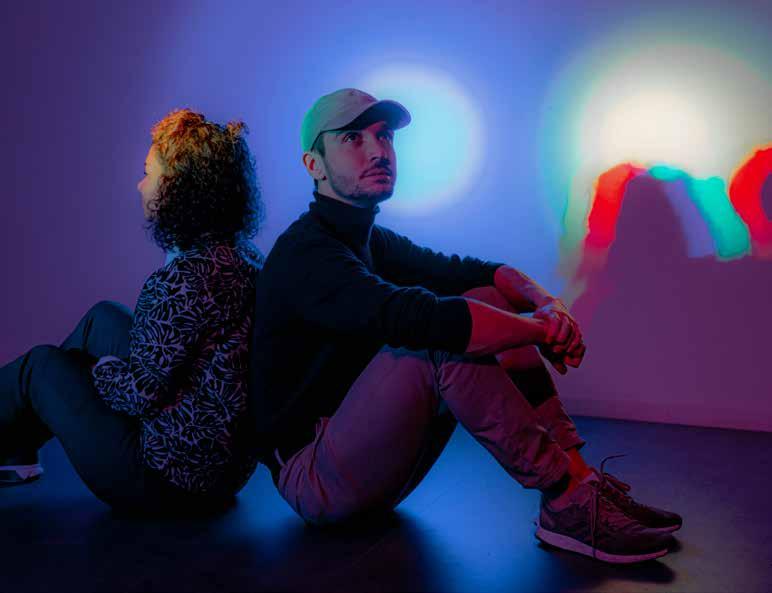
Me-Ga is a research unit focusing on designing, developing and evaluating innovative media experiences and how to create applied serious games with a purpose e.g. to support motivation, engagement, learning, and communication. We are also at the helm of the Samsung Media Innovation Lab for Education (SMILE Lab), where it is possible to experience and work with the latest technological advances within innovative computational media content and interactive storyworlds. In Me-Ga we ask research questions such as:

• How can one exploit the captivating properties of media innovations and games to engage users, students, and gamers by designing, developing, and evaluating transformative and motivating learning environments?
• How to develop new methods in order to evaluate media innovations and games in an applied context.
• How can one design and implement interactive narratives and storyworlds that adapt to the user in real-time? - And how can such experiences support learning and communication?
• How can our collaboration with the film, TV, animatio and gaming industry be used to research and develop novel virtual production techniques and real-time production tools for film, animation and TV?
WEB: https://me-ga.create.aau.dk
PROJECT, MEDIA TECHNOLOGY, COPENHAGEN
The Nordic Sound and Music Computing Network brings together a group of internationally leading sound and music computing researchers from all five Nordic countries.
The constellation is unique since the network covers the field of sound and music from the “soft” to the “hard,” including the arts and humanities, the social and natural sciences, and with a high level of technological competency.
Sound and music computing is a research field that studies the whole sound and music communication chain from a multidisci-

plinary point of view. By combining scientific, technological and artistic methodologies it aims at understanding, modeling and generating sound and music through computational approaches.
PROJECT PERIOD:
January 2018 – December 2024.
PARTICIPANTS:
KTH Stockholm / Aalto University / University of Island / University of Oslo
FUNDING:
NordForsk 27 Mio NKK
Department share 5 Mio NKK
CONTACT PERSON:
Professor Stefania Serafin e-mail: sts@create.aau.dk
WEB:
http://smcnetwork.org
STRATEGIES: SUSTAINABLE TRANSITION FOR EUROPE’S GAME INDUSTRIES
STRATEGIES is an EU HORIZON-funded project that supports Europe’s game industries in realizing their potential as drivers of sustainable innovation, contributing to achieving the goals of the European Green Deal. Thomas Bjørner from Media Innovation & Game Research (Me-Ga) at Aalborg University is leading work package 7 (WP7) in the project. WP7 provides game designs for communicating the goals of the European Green Deal. Taking a participatory design approach, WP7 will create games that aim to generate new knowledge relating to evaluations of user engagement with sustainability goals.
PROJECT PERIOD:
January 2024 – July 2028.
PARTICIPANTS:
Utrecht University, Manchester Metropolitan University, Cologne Game Lab (TH Köln), Media Innovation & Game Research (Aalborg University), The University of Warsaw, The University of Malta, SpielFabrique, Dutch Game Garden, Goat Gamez, Charles Games, Mighty Boards, Neogames, Possible, Charisma Entertainment, and Plasticity Studios
FUNDING:
Horizon 2023, HORIZON-CL2 (REA): 20,5 Mio. DKK
Department share: 2,1 Mio. DKK
CONTACT PERSON:
Head of Media Innovation & Game Research (Me-Ga), Associate Professor Thomas Bjørner (PhD)
E-mail: tbj@create.aau.dk
WEB:
STRATEGIES: https://www.strategieshorizon.eu/.
Me-Ga: https://me-ga.create.aau.dk/

Co-creating urban spaces has a key role in transformation towards better futures and unleashing inclusive, sustainable and thriving urban areas. T-Factor is an EU-funded initiative aimed at creating new knowledge, tools, and capabilities to develop the transformative potential of meanwhile spaces in urban regeneration.
By meanwhile spaces, the project refers to temporary spaces acting as prototypes of future neighbourhoods and areas during an urban regeneration project.
The project involves 25 partners including universities, experts, and local communities and runs in six pilot cities including Amsterdam, Bilbao, Kaunas, London, Lisbon, and Milan.
As a project’s partner, the Service Design lab is involved in developing a methodological toolbox to address and solve urban challenges among the participating pilots. Such challenges include social inclusion, sustainability, community building and connecting the needs of human and other spacious. The service design lab is also involved in creating new knowledge to enabling policymaking, regulatory, governance and funding opportunities.
PROJECT PERIOD:
June 2020 – May 2024
AMONG THE PARTICIPANTS:
Politechnico di Milano (Italy), University of the arts, London (UK), LAMA (Italy), LAND (Italy), Friche la Belle de Mai (France), Kaunas university of technology (Lithuania), Universidad Nova de Lisboa (Portugal), TU Dortmund (Germany), City of Lodz (Poland), London Borough of Camden (UK), Tongji university (China).
FUNDING:
Total granted to the consortium: 7.998.425 euro, funded by the EU’s Horizon 2020.
CONTACT PERSON:
Hadas Zohar, email: hzo@create.aau.dk
WEB: https://www.t-factor.eu/

We see our role as helping communities to imagine and define what could be a better future for them and using our expertise in design to provide them with tools to get there. When it gets to decision making in the urban context, we hope to see more voices brought to the table, to lead towards a more just and sustainable future.
The Media Technology section in Aalborg focuses on research within advanced technologies and the interplay between these technologies and people. Research activities cover both basic research, as well as applied research centred around real world problems. We address a variety of problems in different domains, for example the use of robotics, surveillance technologies, and technology in healthcare.
At the core of our welfare society stands technology and its interplay with all aspects of life ranging from the production industry, over the public sector to entertainment. Our research falls into four main areas: Audio Processing & Music Informatics, Computer Graphics, Computer Vision and Human Machine Interaction.
Our research within audio processing and computer vision has a starting point in signal processing, math and algorithms. This have traditionally been centered on model-based approaches, but in recent years, data-driven approaches have been equally important. This trend follows a general trend in computer science
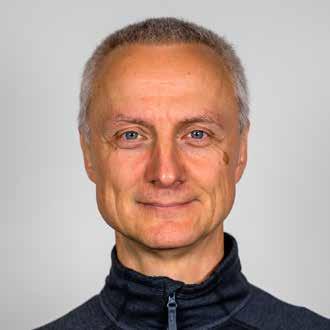
and engineering where massive amounts of data and the rise of modern AI have affected many aspects of science.
Within the areas of computer graphics we work with 3D visualization for Virtual and Augmented Reality. Application s from the real world are key and we push our understanding of how the technology is optimized towards the human senses.
It is critical that technologies and the services they offer are usable by end-users. Moreover, for future technologies and services – for example social robots – the end-users require the technology to operate as expected, which often means similar to how a human would act and respond. One of the important research frontiers within media technology is therefore to understand and develop intuitive and social acceptable solutions for human-machine interaction. Our research in this direction is rooted in both traditional interactions via tablets and smartphones, but also using more advanced platforms like drones and mobile robots.
THOMAS MOESLUND Head of sectiontbm@create.aau.dk
The research group at Create consists of dedicated researchers that investigate challenges regarding cognitive abilities, physical abilities, social rules and practices, as well as environmental parameters that affect or determine human machine interactions. In accordance with AAU’s strategy, the team specializes in applied research with relevant regional and national stakeholders in the areas health, robotics, smart learning and spatial interaction.
Over the last years, the group has built up a strong research expertise in interaction with special needs groups like citizens with traumatic or congenital brain damage, dementia, dyslexia, as well as indigenous groups and kindergarten and school children (primary level).

The group explores different technologies like mobile platforms, robots, wearables, eye-tracking, etc. To this end we work closely together with external partners focusing on real world challenges. Our research is related to three specific themes (health, learning, space) but often transcends two or all of these themes for a concrete challenge.
WEB: www.hmi.create.aau.dk
The research group conducts research in audio and acoustic signal processing for good health and well-being. The research focuses on how audio processing can be used to solve problems of importance to the health and well-being of people in their daily lives. These include reducing the influence of noise on our lives and extracting useful information from degraded acoustic signals for biomedical purposes. The laboratory thus works on a wide range of research topics, such as noise reduction,
active noise cancellation, sound zones, voice analysis, and spectral analysis. The laboratories activities are funded by grants from the Villum Foundation, Independent Research Fund Denmark, and Innovation Fund Denmark. The various research projects are carried out in close collaboration with leading industrial partners and universities around the world.
WEB:

Computer graphics is a wide research field which includes not only the generation of all kinds of graphics with all kinds of computers but also user interfaces to interact with computer-generated graphics, image processing, display technologies, and even camera technologies. The computer graphics research group focuses on photorealistic and interactive augmented reality as well as input and output interfaces for virtual reality. We also explore other directions of computer graphics research, for example, architectural visualization, physics-based animation, computer graphics for video games, etc.
WEB: www.graphics.create.aau.dk
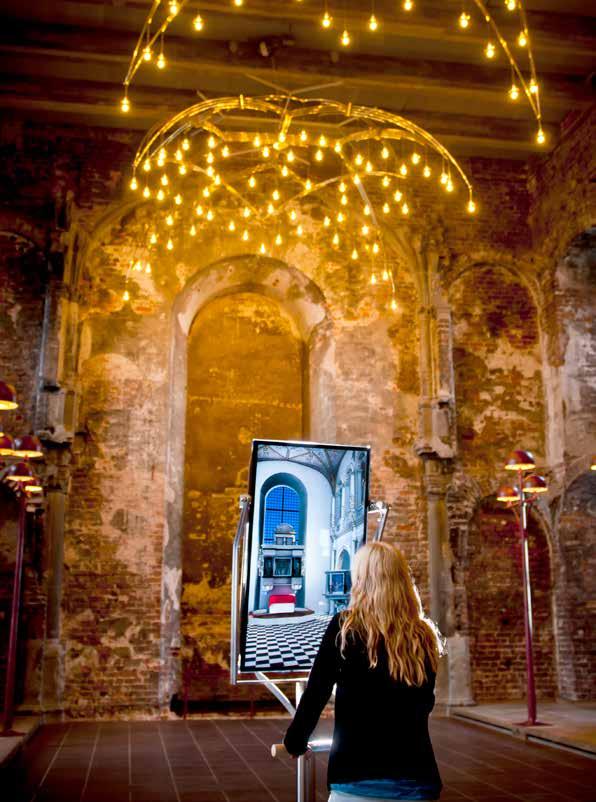
The interest of the research group centers around computer vision. Computer vision is the digital version of human vision, where a camera replaces the eyes and algorithms implemented in software replace the brain. The research field of computer vision is about developing and implementing such algorithms. The ambition is not only to replicate the abilities of human visual perception, but also going beyond
human capabilities for example by seeing in the dark or measuring the actual distance to an object. We are working on many different computer vision topics, but most of them are focused on automatic camera-based analysis of people and their whereabouts. These activities are collected in the Visual Analysis and Perception laboratory.

PIONEER CENTRE FOR ARTIFICIAL INTELLIGENCE
AI has the potential to transform nearly all aspects of human daily and professional life. The Internet has connected information, and it is searchable. AI will leverage this information to the benefit of companies, governments, interest groups, and, if done in the right way, also to the benefit of the individual human being. It is essential that academia take a leading role in developing AI to balance out the influence of other interests. The overriding idea of this centre is that contemporary AI researchers can only make foundational and methodological progress if challenged by new problem contexts, bigger and more complex data sets, as well as new limitations on the methods and their results, such as preservation of privacy, applicability in a wider context or absence of bias. The focus will be on new foundational mathematical models and algorithms, as well as tools to push the boundaries in a variety of application domains.
PROJECT PERIOD:
November 2021 – December 2031
PARTICIPANTS:
Aalborg University / Aarhus University / DTU / University of Copenhagen / IT University of CPH
FUNDING:
Danish National Research Foundation / Novo Nordisk Fonden / Carlsbergfondet / Villum Fonden / Lundbeckfonden
Partner share: 350 mio kr
Department share: 11.5 mio kr
CONTACT PERSON:
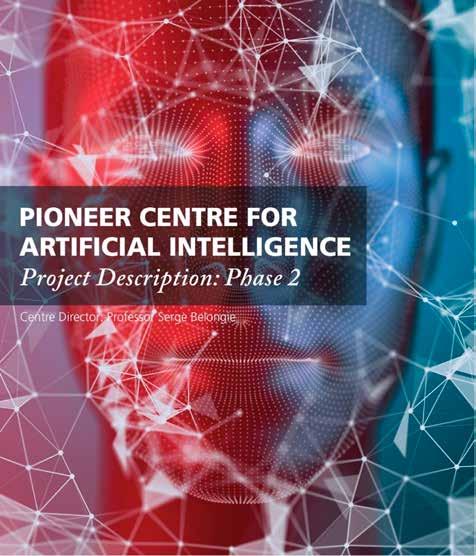
Professor Thomas B. Moeslund
E-mail: tbm@create.aau.dk
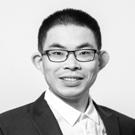
Yang Xian
Data-driven Speech Enhancement: from Non-negative Matrix Factorization to Deep Representation Learning

Peter Byrial Jensen
Designed to Last - A study to support increased product longevity
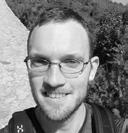
Stefan Hein Bengtson
Semi-Autonomous Control of an Exoskeleton using Computer Visiony

Usama Saqib
Acoustic Echo Estimation using Model-Based Approach with Application to Spatial Map Construction in Robotics

Hossein Dini
Towards a Characterization of Narrative Cognition: EEG metrics for continuous trajectories
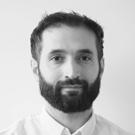
Kemo Usto
Safe Sink TectonicsTowards a Metabolism of the Built Environment within Planetary Capacities

Malte Pedersen
Exploring New Waters: Advancing Fish Monitoring with Computer Vision
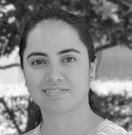
Neelu Madan
Towards Limited Label Learning for Visual Surveillance

Andreas Aakerberg
Revealing More Details: Image Super-Resolution for Real-World Applications

Noor Ul Huda
Occupancy Analysis of the Outdoor Football Fields
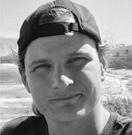
Anders Skaarup Johansen
Generic Object Detection and Segmentation for Real-World Environments

Eszter Sántha
CATALYST – Architecture as a Catalyst for Social and Socio-Economic Value Creation

GENEREL INFORMATION
• Research through design
The Department of Architecture, Design and Media Technology is responsible for the doctoral program of Media, Architecture, and Design. Besides this program some PhD students are enrolled in program for Computer Science and Engineering and Electrical and Eletronic Engineering.

Søren Risdal Borg Designing Urban Industrial Landscapes: An Urban Design Case Study of Origins and Transition Trajectories of the Port Industrial Site in Eastern Aalborg
The Department of Architecture, Design and Media Technology is responsible for the doctoral program of Media, Architecture, and Design. Besides this program some PhD students are enrolled in program for Computer Science and Engineering and Electrical and Eletronic Engineering.
THE PHD PROGRAM IN MEDIA, ARCHITECTURE AND DESIGN
The PhD Program in Media, Architecture and Design is a broad, inter-disciplinary program that focuses on design where the end-user and stakeholders have a central role in the research perspectives. Emphasis is placed on architecture, design & media focusing on the technical, social, and aesthetic dimensions. Construction and form of buildings, urban landscapes and spaces as well as design of artefacts, interactive media and art installations are of central concern. Further, emphasis is also on design and technology in the fields of environmental and social sustainability, aesthetics and experiences, interaction design and design media and architecture as tools for local and international development – and for ’a better world’.
Emil Rosenlund Høeg Just Like Riding a Bike: Exploring the Motivating Capabilities, Contextual Barriers and Facilitators of Virtual Reality and Cycle Ergometers for the Rehabilitation of Older Adults in Clinical Practice
Research within the program is wide-ranging and inter-disciplinary and concerns:

• Architecture, sustainable architecture, performative
The PhD Program in Media, Architecture and Design is a broad, inter-disciplinary program that focuses on design where the end-user and stakeholders have a central role in the research perspectives. Emphasis is placed on architecture, design & media focusing on the technical, social, and aesthetic dimensions. Construction and form of buildings, urban landscapes and spaces as well as design of artefacts, interactive media and art installations are of central concern. Further, emphasis is also on design and technology in the fields of environmental and social sustainability, aesthetics and experiences, interaction design and design media and architecture as tools for local and international development – and for ’a better world’.
As the focus is on design as a constructing praxis, there is an interest in developing new research approaches such as practice-based research, research by design and participatory design processes. Several research projects under the program are working with experiments in a scale of 1:1– or have the goal to develop new designs, architecture or prototypes that can facilitate trials and experiments with participation of the goal end-users and stakeholders. Often, research, development and experimentation is carried out in collaboration with external private or public partners. The goal is to strengthen and develop theories and methods for research by or through design. In addition, we aim to strengthen the relationship and invoke collaboration between research and praxis, and develop research tools to enable these developments.
THE RESEARCH ENVIRONMENT IS INTERDISCIPLINARY AND PROBLEM-ORIENTED
Urban design, urban transformation, urban space, urban culture /life Mobility, mobilities design, and infrastructures
Interaction design, responsive environment, experience design, service design
• Media art, performative art and technology
• Industrial design, design of artefacts, design processes
Lui Albæk Thomsen Virtual Reality in Mathematics Education (VRiME): An Investigation of the Design and Use of Virtual Reality in Teaching and Learning Mathematics
The research draws on perspectives from engineering research, as well as from relevant design, architecture, media technology, human centered computing, and social research disciplines. As an interdisciplinary and problem-oriented approach, we seek alternatives for solving particular problems within productions, social and public services, buildings, local neighborhoods, cultural enterprises and the urban fabric as such.
The research draws on perspectives from engineering research, as well as from relevant design, architecture, media technology, human centered computing, and social research disciplines. As an interdisciplinary and problem-oriented approach, we seek alternatives for solving particular problems within productions, social and public services, buildings, local neighborhoods, cultural enterprises and the urban fabric as such.
The Department of Architecture, Design and Media Technology offers a range of Bachelor and Master’s educations at Aalborg University in the cities of Aalborg and Copenhagen. On bachelor level, the two educations in Architecture & Design and Medialogy each provide students with broad competence profiles that allow them to work together with a wide range of industries and professional fields. Having finished one of these two 3-year bachelor’s educations, graduates have the option to continue studying on a master’s education at the department or elsewhere.
The department’s portfolio of master’s educations builds naturally on top the two bachelor educations, spanning in disciplines from Sound and Music Computing over Architecture, to Urban Design and Lighting Design. All master educations are grounded in a solid research environment at the department and aim at educating world-class graduates to Danish and the international industries. Furthermore the department are involved in several educations like: “Robotics”, “Vision, Graphics and Interactive Systems” and “Art & Technology”. Summer 2023 the department will start a new diploma engineer programme: Bachelor of Engineering in Artificial Intelligence.
WEB: www.create.aau.dk/studies
Hans Jørgen Andersen Head of Department
Marcus Lögtefeldt Head of Studies
Thomas Arvid Jaeger Chairman
Study Board of Architecture & Design
Study Programmes
Bsc. in Architecture & Design
Msc. in Industrial Design
Msc. in Architecture
Msc. in Urban Design
Study Board of Media Technology
Study Programmes
Bsc. in Medialogy
Msc. in Medialogy
Msc. in Lighting Design
Msc. in Service Systems Design
Msc. in Sound and Music Computing
Bsc. of Engineering in Artificial Intelligence
STUDY ADMINISTRATION
Semester administration
Study board administration
Claus Brøndgaard Madsen Chairman
Anne Christoffersen Area Manager

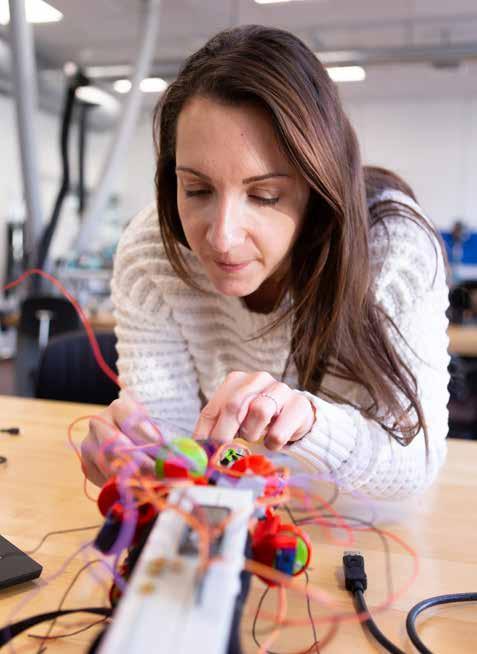
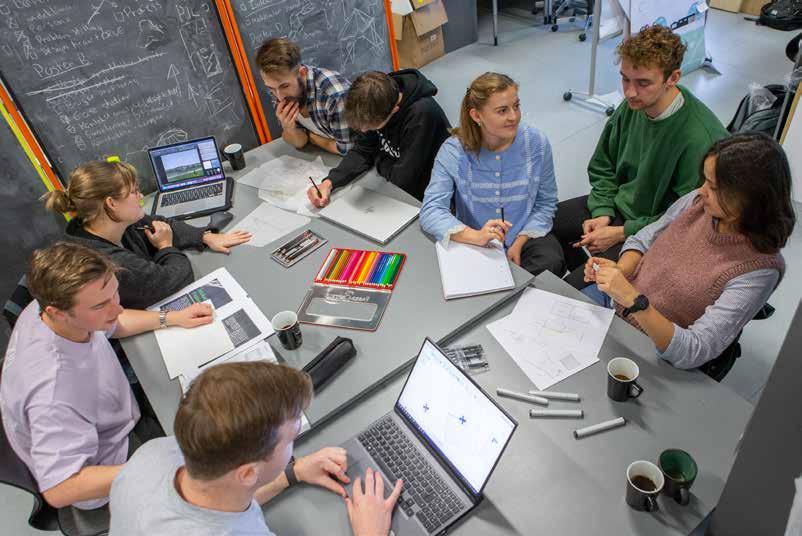
The Medialogy bachelor’s education is based on, among others, the studies of human and computer relations, audio-visual effects, human perception, immersive computer systems and new interfaces. During the span of the education, the students are given a strong technical foundation both in theory and in practice via teaching in for example math, programming and sensor technology. The teaching is applied in the semester projects where the students work together in groups to solve real-life problems.
Besides technical courses such as programming and experimental design, students study areas within perception, interaction design, sound, graphics, games and film – and how computer science plays a part in the media productions both now and in the future.
The Architecture and Design bachelor’s education combines engineering, design, architecture and creativity in a holistic approach that allows students to work across several fields and disciplines. The education is rooted in the Scandinavian tradition and it offers students to choose a specialisation after one year.
The specialisation in Architecture and Urban Design offers students a broad professional set of competences that prepares them to work on projects from family housing to large and complex solutions for urban areas.
The specialisation in Industrial Design focuses on the design, construction and production of products to both private and professional users. Emphasis is on designing the right solutions –both in regards to the user and to the use of resources.
In the program "AI Engineering," the student undergoes a 3½-year bachelor of engineering education explicitly oriented towards employment in the industry or other sectors outside academia. The student engages in a six-month internship during the program, providing an excellent opportunity to gain practical experience within an actual company.
Furthermore, all projects are industry driven, with courses to support that. This approach ensures that the student not only
acquires theoretical knowledge about artificial intelligence but also actively engages in problem-solving and practical work, addressing a variety of realistic tasks that prepare them for contributing to the field of AI in the industry.
AI Engineering stands out as a unique program, offering a comprehensive exploration of technology and products—from conception to implementation.



MEDIALOGY
In the Medialogy master’s education, students learn about the science and technology behind groundbreaking interactive digital systems, and they learn to develop computer games, computer-generated 3D-graphics and interactive media products.
Students gain a professional profile directed at both the Danish and international job market, and graduates from the education are known for their skills in designing and programming new, interactive media products and tools, for example, computer games, advanced digital user interfaces, or virtual reality experiences..

Evaluating complex media systems on the basis of tests as well as evaluating technology in relation to user-oriented aspects are also competences that students gain from the Master’s education in Medialogy.
Project Example
Using conversational agents to support the aftercare for stroke patients
The students aimed to improve the experience for individuals who have had a stroke and are transitioning home from the hospital. While doctors ensure their medical stability, they are often sent home to fend for themselves, whitout keeping track of their needs and overall condition. Consequently, the students explored how conversational agents could enhance their aftercare by collecting PROM-data. This means that patients, for example, complete questionnaires that provide insights into their health status.
The questionnaires cover various aspects, including quality of life, mental health, and physical condition. This approach allows patients to better assess their health and their ability to carry out daily tasks, such as cooking dinner. The students conducted several tests on patients, and the feedback was overwhelmingly positive. Patients found it much more enjoyable and perceived the conversational agent’s assistance helpful when responding to the questionnaires.
Students: Steffen Lehmann and Veronika Nemcova
Supervisor: Hendrik Knoche
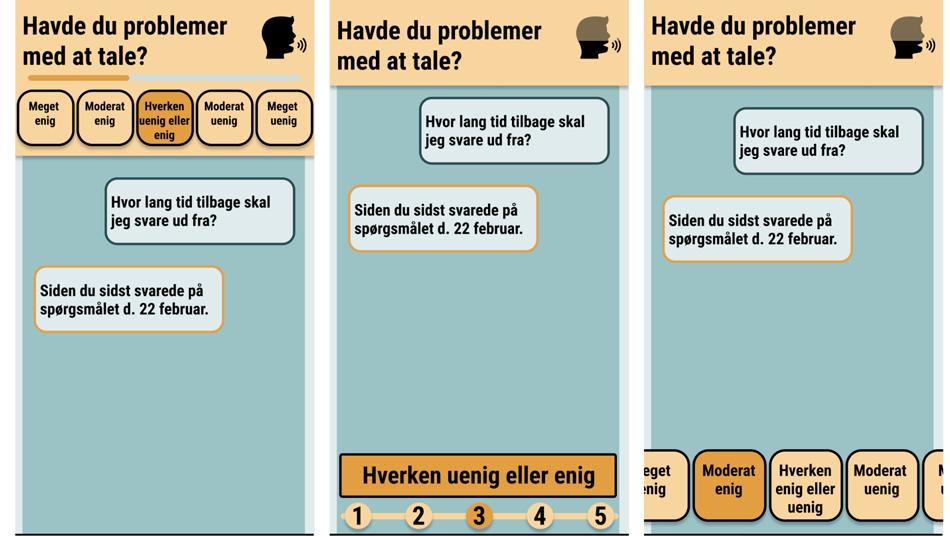
We want to improve the aftercare for stroke patients who return home and struggle to adjust to their new lives


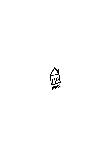
Amira goes to the Music of the Future program at the Musikmuseet.
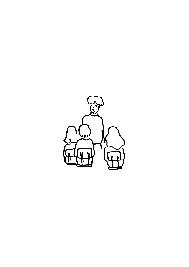

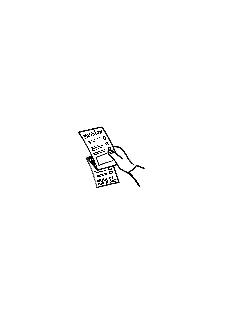
[REWARD TIME]
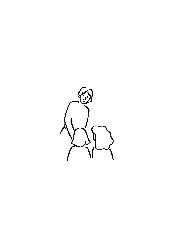


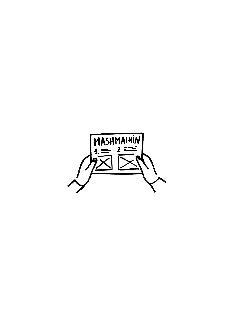
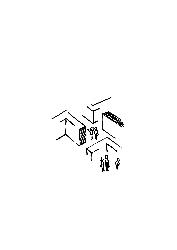


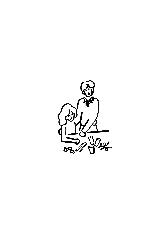
(4) THE SERVICE’S STORYBOARD PLAY-TO-LEARN: A NEW SERVICE FOR THE MUSIKMUSEET

[REWARD TIME]




[The kids play with the OVNI, they’re excited to use the colorful installation.]

rolls for the body and 17
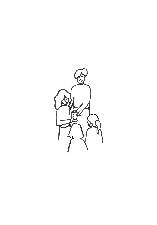
Now this is a great example of a new instrument!
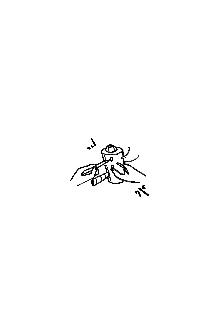
[REWARD TIME]
WOW, Amira!
Amazing


15
[The following day, back at School]
[The teacher explains to the kids the post-activity, and how they have to do it at home and bring the results.]

16
I saw such interesting things today, but what should do?
[Later on that day, at home][Amira thinks about everything she saw at the museum, and how she is to be making her own instrument.]
21
MOM! I won the Music of the Future Mission!
At the Service Systems Design Master’s education, students learn how to plan and organise people, infrastructure, communication, media and components of a service, in order to improve its quality, the interaction between service provider and customers, and the customers’ experience.
Some of the people who pioneered service design drive the education and it is uniquely connected to vibrant communities of entrepreneurs and social innovators in


And learnt so many new things!

22 I’m really proud of you! You have to tell me all about it!
[At the end of the school day][Amira is waiting for her mom to pick her up. When they see each other Amira runs excitedly to her, to tell her all about what they’ve been doing the past days.]
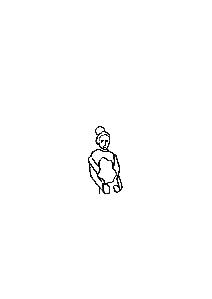
[Amira proceeds with telling her mom about the visit to the museum, the game and how she won.]
Mom, really would like to go with you and Dad to the Musikmuseet! Me too, honey.
23
[Amira shows the Musikmuseet’s website and the pictures of the visit and the instruments made by the class.]
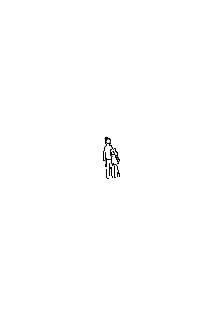
[Final scene] 24
Denmark and abroad. Graduates from Service Systems Design work for companies such as Danske Bank, Bang & Olufsen, Roche, Fujitsu, Novo Nordisk and they help public organizations such as the Danish Tax Authority, Copenhagen Police, and Copenhagen Healthtech Cluster to provide better and more impactful services.
Project Example
We wanted to improve the children’s experience around the visit to a museum and therefore, we created a service concept, which supports a playful learning experience.
Play to Learn – providing a playful learning experience in a museum
The students worked on a service redesign for the Musikmuseet, which connects values, actors and stages. The service concept is called ‘Play to Learn’, where the aim was to improve the kids’ experience around the visit at the museum. It supports a playful learning experience that goes beyond the time spent at the museum.
The service concept ‘Play to Learn’ are based on children, connectivity, and circularity. It focuses on connecting the stages of a museum visit, including pre-, during and post-visit stages. For instance, the post-visit activities are designed to be carried out at home, allowing children to share their experiences and co-create with their parents. Further, they introduced a paper ‘Mission’ card to enhance the connectivity between stages. The ‘Mission’ card is meant to be used by the child in all stages, meaning, pre-, during and post-visit.
Isabel Maria Martins Lopes, Maria Boguslawa Krasuska and Marta Giacosa
Supervisor: Amalia de Götzen
Students: Anna Baldo, Francisca Melo Palma Salgado Silvano,
Graduates from the master’s education in Sound and Music Computing will become important players in the new information society. Through a combination of practice and theory in subjects such as data modelling, signal processing, pattern recognition, sound technology and -perception, cognition and interactive systems,
students obtain a solid background in a fast-growing field. Annually, Denmark exports sound and music products for over €2 billion such as hearing aids, multimedia productions, music equipment, communication technology, hi-fi equipment, games development and measuring equipment, etc.
Project Example
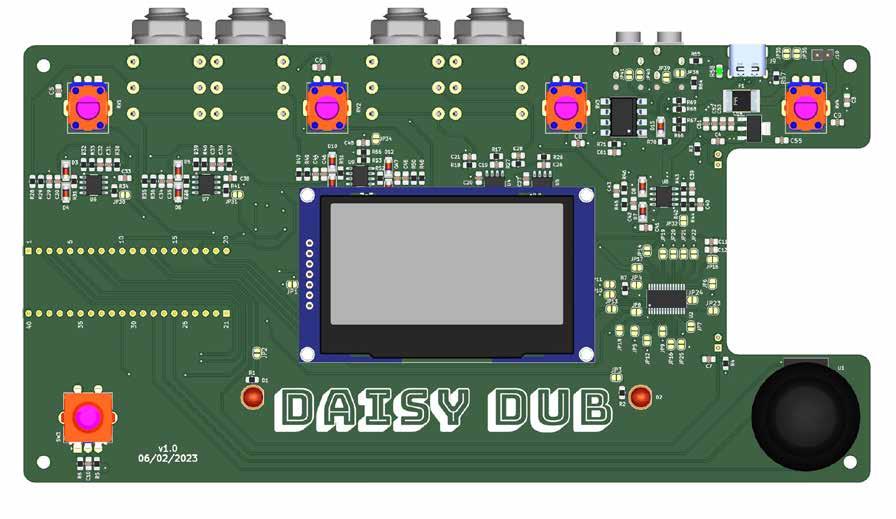
The students had a clear ambition to create the ultimate hardware development platform for sound effects and synthesis, making it easier for anyone to delve into sound and music. Their vision resulted in Daisy Dub, a customizable and programmable open-source solution with a straightforward setup that offers many functionalities within sound and music. Daisy Dub simplifies creating sound effects and synthesizers in traditional programming languages, enabling users to transfer their sound effects and synthesizers from the computer to the stage.
Daisy
alleviates the challenge, making it easier and straightforward for musicians to create unlimited sound effects and synthesizers. Daisy Dub uses a new microprocessor specifically designed for music, and the students designed the board of Daisy Dub with musicians in mind, emphasizing ergonomics, versatility, and simplicity. Their primary focus was creating an enjoyable, functional user experience that fosters flow and intuitive interaction.
Students: Leo Fogadić, Oliver Bjørk Winkel and Rasmus Emil Reffstrup Kjærbo
Supervisor: Stefania Serafin
We wanted to create the best open platform for real-time audio processing and synthesis, making it easier for anyone to delve into the world of sound and music computing
In recent years, lighting technology has undergone a revolution, including intelligent and interactive control of light in rooms. Moreover, new lighting technologies and use of interactive screens are becoming increasingly visible in the public space. Therefore, professional and highly educated lighting designers are sought after. Companies are
looking for people who understand lighting design, who are able to work with existing technologies and develop new and smart solutions.
The Master’s education in Lighting Design is a cross-disciplinary and international program based in a special Danish and Nordic tradition for light perception. Focus is on how the technical qualities of light and materials are applied in order to promote comfort and aesthetics.
Project Example
The students worked on the lighting design for a room at a nursing home, scheduled for construction in 2025. The nursing home is intended for elderly individuals in the advanced stages of dementia, with the project aiming to improve their wellbeing. The room is referred to as the ‘light-filled green room’, because it draws on natural daylight, featuring a large glass facade to establish a visual connection with nature and greenery. Plants and natural materials will also be incorporated.
A central focus of the project was to design the room in a way that enhances the circadian rhythm of the elderly resident's trough lighting. Circadian rhythm refers to the natural, daily cycle in our bodies. While the field of scientific research on the impact of light on circadian rhythm is relatively new, studies have shown its positive effects on dementia patients. For instance, it can improve their sleep patterns, reduce the need for medication, and minimize aggressive behaviours.

Students:
Daniel Claes Thiesen and Emma
Gram Nielsen
Supervisor:
Nanet Mathiasen
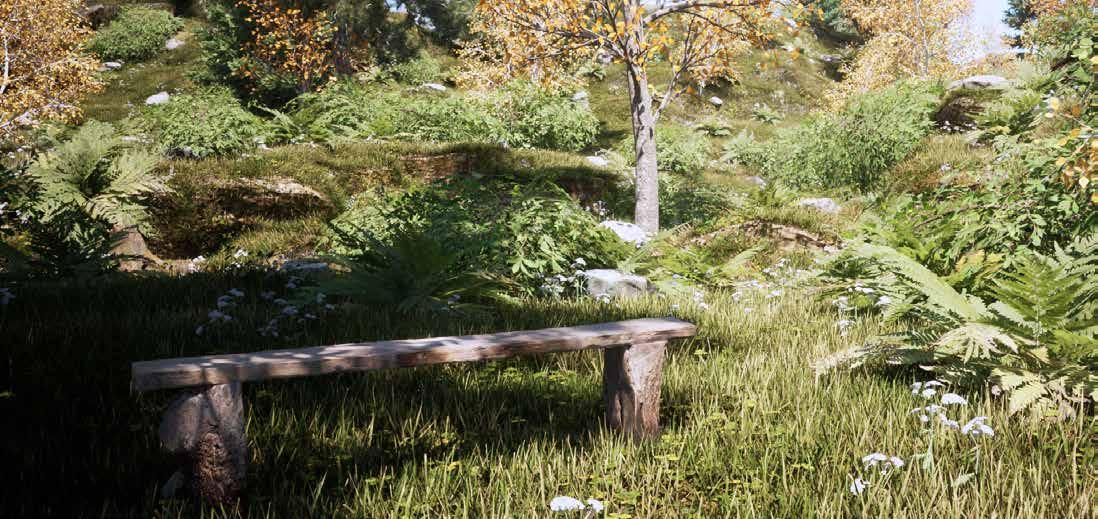
We wanted to create a lighting design which supports the circadian rhythm in the best way, because it has many beneficial effects for elderly residents with dementia
The Master’s programme in Industrial Design focuses on an integrated process of concept design, construction and product development. Aesthetical competencies and creativity in the design development process are combined with knowledge of construction, product development, ergonomics, materials, environment, design management and economy.
With a Master’s degree in Industrial Design, students gain an understanding of product design and business perspectives. Graduates from Industrial Design are capable of combining solutions and products that are innovative as well as functional.
Project Example
Motus – an extension of yourself
The students worked with exoskeletons for incomplete tetraplegics, a type of spinal cord injury resulting in a loss of mobility in the lower body, hands, and arms. This profoundly affects their quality of life, making them an interesting target group for the students, as they potentially could make a significant difference. Exoskeletons are being increasingly developed, but the primary focus is on basic functions, while this group approached it from a different angle, emphasizing aesthetics and how It could seamlessly integrate into the user’s life, and analyzing the aspects of function, application and aesthetics equally.
Their thorough research and process was based on design, the user, and the product in use. This resulted in Motus, which challenges the paradigm of exoskeletons. The Motus mantra is ‘Designed as an extension of yourself’, signifying greater customizability for the user and a stronger connection to the user’s sense of identity. For instance, it will be possible for the user to adjust it to match clothing and appearance. Furthermore, Motus enables three different grips for the user, covering approximately 90% of the daily hand movements.
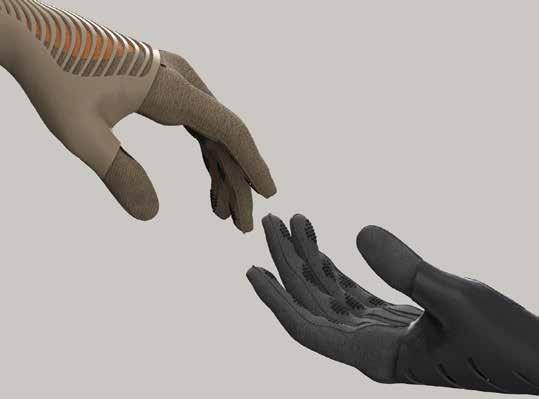
Students:
Danny Chau Huynh and Sofie Busch
Supervisor:
Christian Tollestrup
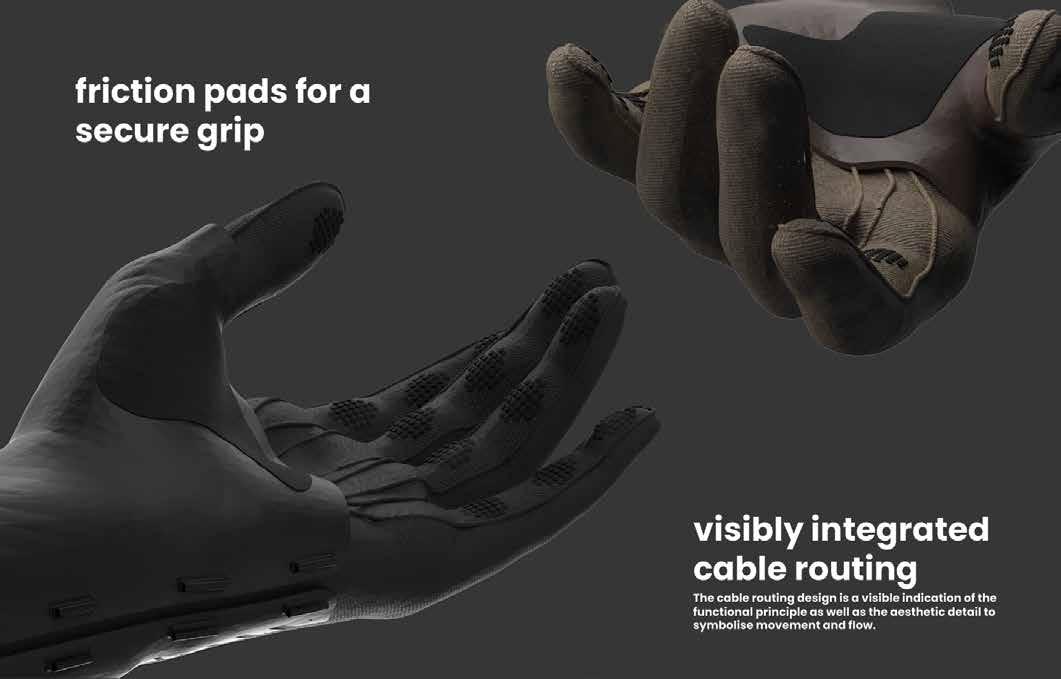
We have designed Motus to be an extension of yourself – both aesthetically, physically, and emotionally.
At the Master’s education in Architecture, the Nordic context is the point of departure for exploring the intersection of architecture and engineering in a local and a global perspective. Sustainability and tectonics are central and interlinked fields of importance in this regard, as the students challenge and develop the social, environmental and economic role of architecture towards an enhancement of the built environment. In doing so the students integrate a multitude of aesthetic, functional, constructive, contextual, material, and environmental aspects of architectural space while exploring its relation with- and influence upon our health and well-being in a problem based learning environment. Hence, with a foundation in an intersection of theories, methods and experiments pertaining to architecture and engineering, the Master’s education in Architecture ensures an interdisciplinary and international competence profile.
Transforming an old hospital into a vibrant residential hub
The student's approach was an ambitious attempt to transform a former hospital building in Aalborg into a modern residential complex. The project enters an ongoing municipal development of the hospital area in Aalborg, transforming the existing buildings into residential structures. The essence of the project was to create an environment based on collectivism and communal functions with the purpose of bringing people closer together. It also introduces a range of alternative living arrangements to accommodate changing family structures.
Sustainability has played a primary role, and preserving buildings by optimizing them in various aspects can often be a very sustainable solution. For instance, the project includes an in-depth examination of energy optimization strategies. Through careful energy renovation, the old concrete structure was updated to present standards without sacrificing the original expression.
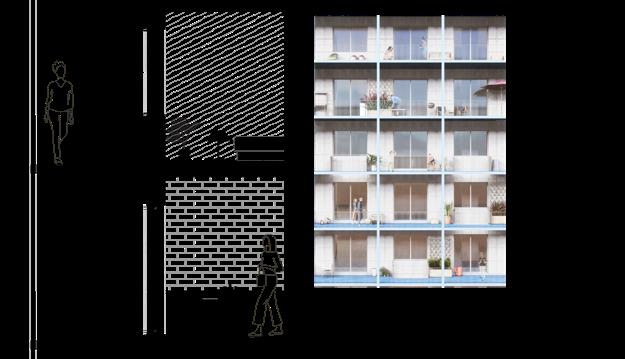
Students:
Mathilde Zink Olesen and Mie Leth Junge
Supervisors:
Michael Lauring and Kirstine Meyer
Frandsen
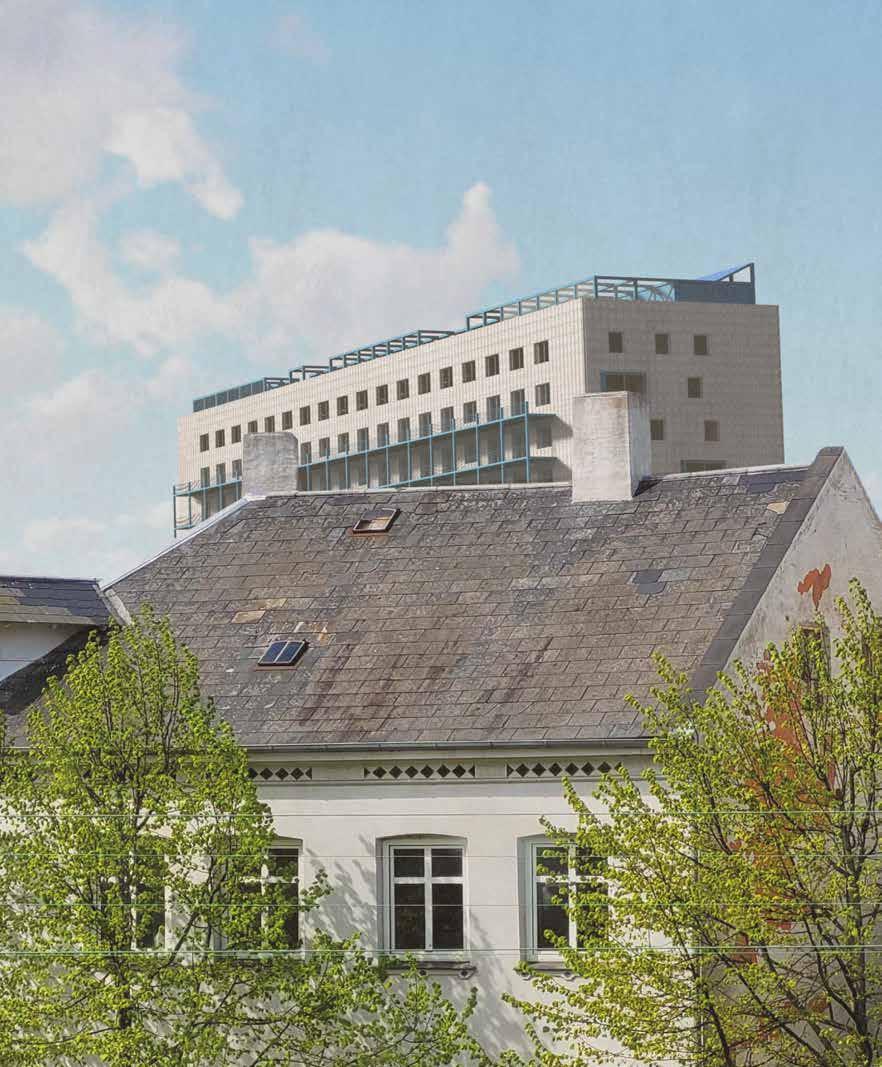
Through a combination of transformation and respect for the existing building, the project serves as a statement about how architecture can bridge the gap between the past and the future.
The Master’s education in Urban Design with specialization in Urban Architecture takes its point of departure in a number of current and future challenges in relation to the design of the built environment and urban spaces. You will get a solid and professional foundation in subjects, methods and theories of urban design, including technologies, modelling and user involvement.
The specialisation in Urban Architecture offers each student a creative combination of problem-based learning (PBL) and realistic projects with “hands-on” challenges that equip the student to address e.g. climate change, temporary urban development projects,urban mobility, projects and strategies of the culture city, the urban landscape and city growth.
Project Example
The student worked on a post-industrial port development in Struer. The ambition was to create a masterplan for the harbour area that could deal with the issue of disconnection from the city and inactiveness due to the old industry being abandoned. The masterplan’s primary focal point was relinking the port to the city, and the nature. The project was also focused on how to make the inactive facilities to a new cultural heritage as well as how to reshape the shoreline to be ready for rising water levels. The student incorporated circular materials and waterfront naturalization in the suggestions of the masterplan.
The masterplan proposed a pedestrian promenade along the shoreline from the city to the nature. This makes it more connected to the surrounding areas. It was also a goal to make the harbour an attractive place with enhanced natural soundscape for citizens, newcomers, and tourists.

Student: Ugné Noreikaité
Supervisor: Ida Sofie Gøtzsche Lange
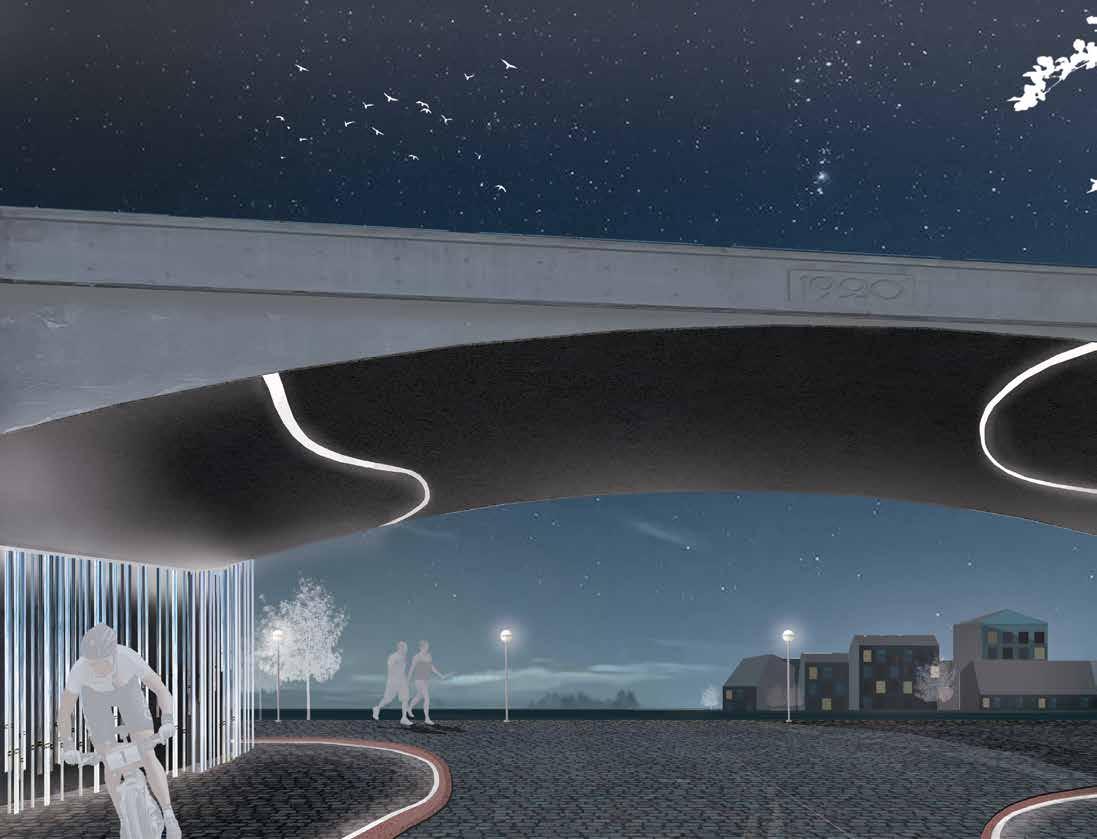
I wanted to explore the potential of a smaller city and create a vibrant urban DNA that would make the harbour a well-integrated city part where old and new is wowen together
The Master’s education in Urban Design with specialisation in Mobilities & Urban Studies approaches mobilities as more than simply movement and it offers a new innovative and cross-disciplinary mobility-profession based on the new mobilities turn. The specialisation in Mobilities & Urban studies integrates the diverse challenges that are related to an increasing physical mobility (traffic and transportation by car, plane or train alike), increased use of virtual mobility (mobile phones and smart transport systems), increasing social mobility (tourism and migration) and environmentally friendly and sustainable modes of transportation (e.g. bicycle cultures or bike lanes in Copen-
This project is focused on Viby Torv in Aarhus, an area with a mobility system primarily centered around cars and public transport.
They wanted to challenge the current way mobilities are organized at Viby Torv. Moreover, the purpose of the project was to connect the mobility systems with the urban spaces. It should be easier for the user to make smooth transitions when transitioning from different modes of transport. This resulted in a master plan of the mobility hub 'Viby Centrum' which proposes an inclusive space for the mobilists and their individual mobility needs along with current residents and users of Viby Torv.
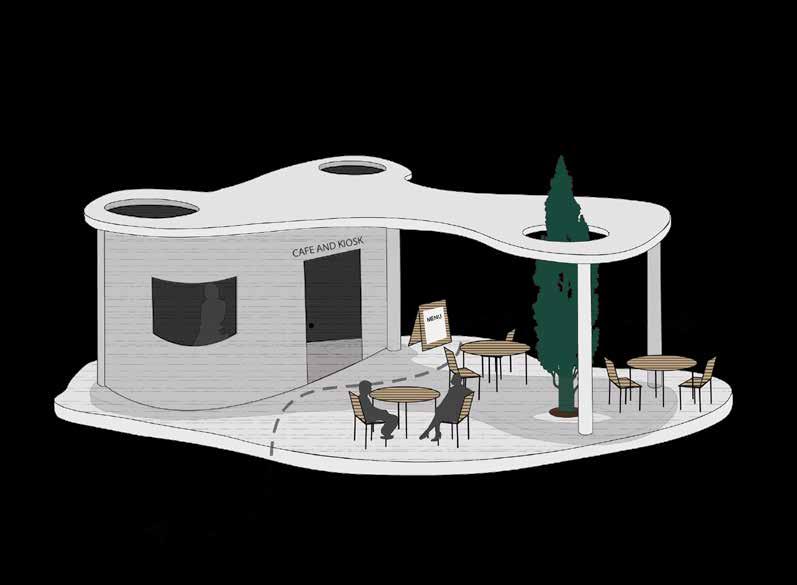 Olivia Hecht Stenum and Simone Andresen
Olivia Hecht Stenum and Simone Andresen


We wanted to challenge the existing transport system on how they are planning traffic.
The administration at CREATE supports the work of the academic staff and the students and is called the Technical Administrative Staff, in daily speech TAP. The administration consists of many types of teams and staff: Leaders, department team, study team, financial team, and workshop team.
The tasks are manifold, but the ambition is the same: To deliver the best possible service for students, academic staff, and external partners.
ADMINISTRATION TASKS:
Department team:
• Employment of academic staff, PhDs and administrative staff, holiday and sick leave administration
• Coordination of events at the department, i.e. graduation events, conferences and seminars
Study team:
• Scheduling and planning of courses and exams
• Booking of rooms for teaching and managing group areas
• Administration of educations and students’ courses and studies
Financial team:
• Budgeting and accounting of daily operating finances
• Operating project finances

EXAMPLES OF
LENE GRUNDAHL
Head of administration
lgru@create.aau.dk
Workshop team:
• Workshop assistance to researchers and students
• Maintaining and renewing workshop machines


60 students
Bachelor of Engineering in AI Engineering
Medialogy Aalborg
Medialogy Copenhagen
Architecture and Design Architecture and Design educations (AAL)
Media technology educations (AAL+KBH)
Architecture and Design educations (AAL)
Media technology educations (AAL+KBH)
In 2023 CREATE launched a new Bachelor of Engineering Education on AI Engineering. The educations focus on use and implementation of AI that is highly demanded by the industry. We started with 22 students and are looking forward the intake the coming years.
In September and October 2023, three students from our Master's program in Architecture (MSc in Engineering), Bastian Mosegård, Azul F. Isidoro and Nicolai Hou, won two prizes for their master's thesis "Sundparken. Sourcing, re-use and transformation" on the sustainable transformation of a residential housing estate in Horsens. KAB Fonden and the Royal Danish Academy awarded the thesis for its holistic and systematic approach. The jury of the Sweco Transform Prize particularly emphasized the interdisciplinarity and topicality of the project, pointing out that the project deals with the Parallel Society Act with an intelligent, constructive and well-documented approach to solving social challenges in transition areas.
Ministry of Higher Education and Science awarded Phd student Prithvi Kantan an Eliteforsk Rejsestipend for his project regarding sound and music feedback for rehabilitation. His work on how to best design sound feedback to help motor learning in stroke patients was also awarded first prize in the Danish Sound Day research pitch battle (arranged by Danish Sound Cluster).
Professor Ole B. Jensen has been honored with the Order of the Dannebrog for his contributions to architecture, urban planning, and mobility. His research has connected disciplines within urban planning, infrastructure, technology, architecture, and design in innovative ways, thereby laying the foundation for a new mindset on how to create sustainable and socially inclusive urban designs.
Kasper Rodil, Associate Professor at the HMI group in AAL, has collaborated with Namibia University of Science and Technology(NUST) on technology innovation with indigenous communities for more than a decade. One of the research vectors investigates how indigenous people can become contributors to Virtual Reality systems design. The latest research and prototypes include active participation by NUST and CREATE students and faculty and were awarded with the best Full-paper and best Demo at 4th African Human Computer Interaction Conference (AfriCHI) in East London, South Africa in December 2023.
On the 11. October 2023 a double exhibition on sustainable achitecture opened. The Danish Architects' Association's travelling exhibition 'Danish architecture on the way to the UN's 17 Sustainable Development Goals - can we build a better future?' - the exhibition shows 27 architectural projects from all over the country, including North Jutland- opend. At the the same time a second exhibition 'Sustainable transitions- Master's theses 2023', showing how sustainability and life cycle considerations drive architectural and urban designs in Master's projects 2023 from our Masters' programmes in Architecture and Urban Design opened in CREATE's beautiful foyer.
Teachers of the year 2023 was awarded to:
• Assistant Professor TINA VESTERMANN OLSEN from Architecture and Technology.
• Professor STEFANIA SERAFIN from Media Technology.
Aalborg University
Department of Architecture, Design and Media Technology
Rendsburggade 14, 9000 Aalborg
Phone: +45 9940 7130
Head of administration
Lene Grundahl
Phone: +45 9940 7130 lgru@create.aau.dk
Media Technology Copenhagen
Henrik Schønau Fog
Phone: +4599402477 hsf@create.aau.dk
Architecture and Urban Design
Lea Holst Laursen
Phone: +45 9940 7174 llhl@create.aau.dk
Head of Department
Hans Jørgen Andersen
Phone: +45 9940 8834 hja@create.aau.dk
Head of studies
Markus Löchtefeld
Phone: +45 9940 7172 mloc@create.aau.dk
Industrial Design
Christian Tollestrup
Phone: +45 9940 9915 cht@create.aau.dk
Media Technology Aalborg
Thomas Moeslund
Phone: +45 9940 8787 tbm@create.aau.dk
CREATE.AAU.DK